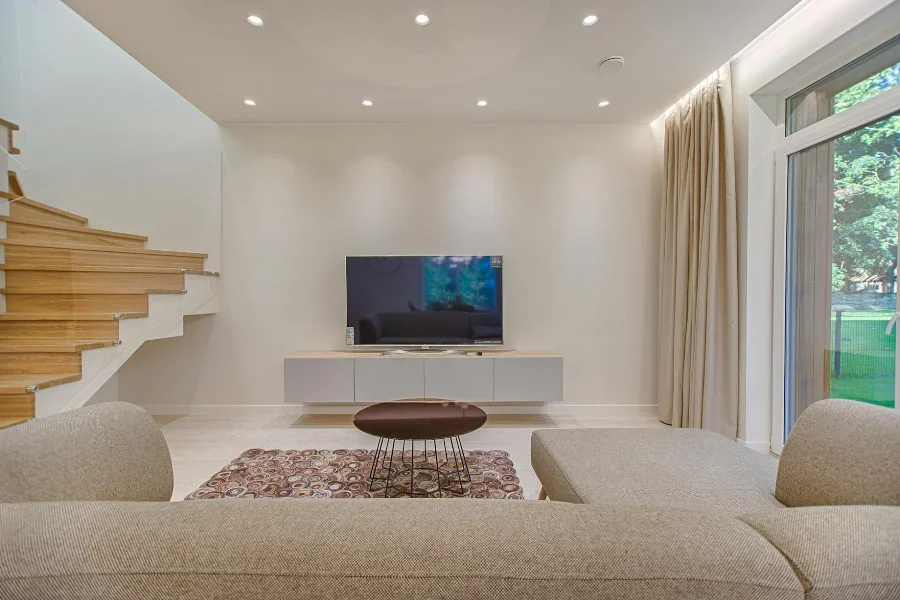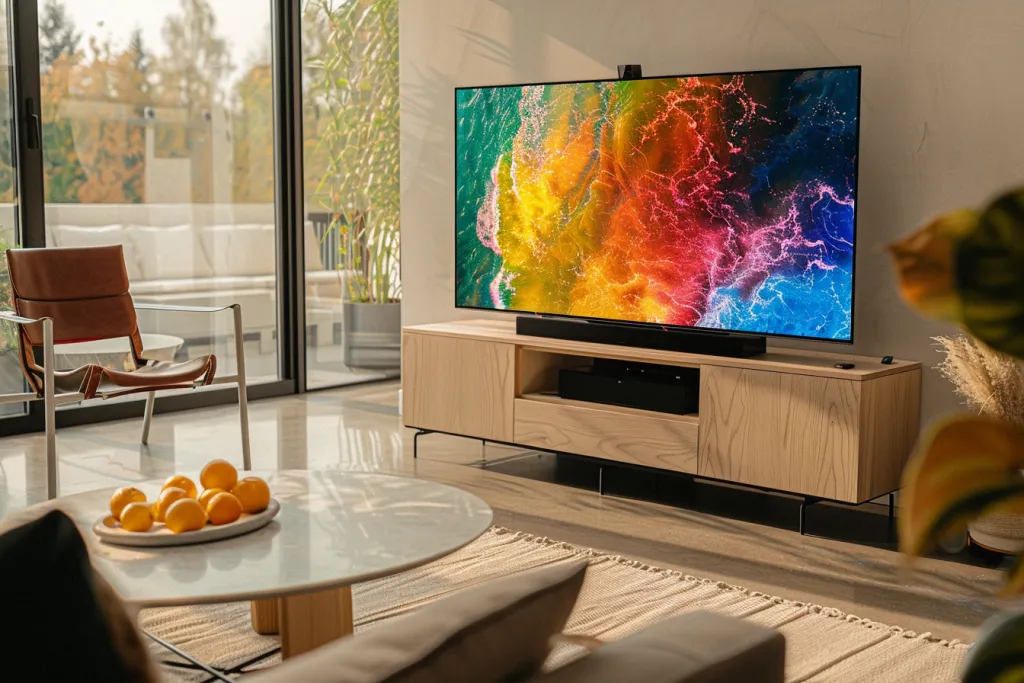In the realm of home entertainment, a 55 inch TV stands as a popular choice among consumers. Offering a balance between size and functionality, it provides an immersive viewing experience without dominating the living space. This article delves into the workings, benefits, drawbacks, and selection process of a 55 inch TV, ensuring you make an informed decision.
Table of Contents:
– What is a 55 inch TV?
– How does a 55 inch TV work?
– Benefits and drawbacks of a 55 inch TV
– How to choose a 55 inch TV
– How to use a 55 inch TV
What is a 55 inch TV?

A 55 inch TV is more than just a screen size; it’s a gateway to an immersive entertainment experience. The measurement refers to the diagonal length of the screen, which is approximately 55 inches from one corner to the opposite. This size is considered by many as the sweet spot for living rooms, offering enough screen real estate to support high-definition content without requiring a vast amount of space.
In the current market, 55 inch TVs come equipped with a variety of technologies. From LED and OLED to QLED, each technology offers distinct picture quality, color accuracy, and viewing angles. Furthermore, smart functionalities are now a standard, providing access to streaming services, internet browsing, and even voice control, transforming the way we interact with our TVs.
The evolution of 55 inch TVs over the years has been remarkable. Initially, they were luxury items with limited features. Today, they are at the forefront of technology, offering 4K and even 8K resolutions, HDR support for better contrast and colors, and integration with home automation systems. This evolution has made them a central piece of modern living rooms.
How does a 55 inch TV work?

Understanding the technology behind a 55 inch TV can enhance appreciation for the device. At its core, a TV operates by receiving and displaying broadcast signals or streamed content. The quality of the display depends on the screen technology—LCD, LED, OLED, or QLED. LED TVs use light-emitting diodes to illuminate the screen, offering bright images and energy efficiency. OLED and QLED technologies, on the other hand, provide superior color contrasts and viewing angles by using organic compounds or quantum dots to emit light.
The processor inside a 55 inch TV plays a critical role in picture quality. It handles the upscaling of content to match the screen’s resolution, improves color accuracy, and reduces motion blur. This is especially important for 4K TVs, where the processor ensures that even content with lower resolution looks sharp and detailed.
Smart features in 55 inch TVs are powered by operating systems similar to those in smartphones. These systems support apps, streaming services, and sometimes even games, turning the TV into a multi-functional entertainment hub. Connectivity options like HDMI, USB, and Wi-Fi enable the connection of external devices and the internet, further expanding the capabilities of the TV.
Benefits and drawbacks of a 55 inch TV

The benefits of owning a 55 inch TV are numerous. The size offers an immersive viewing experience, making it ideal for movies, sports, and gaming. The high resolution and advanced screen technologies deliver stunning picture quality, with vibrant colors and deep blacks. Smart features provide convenience, allowing users to stream content directly, use voice commands, and connect to other smart devices in the home.
However, there are drawbacks to consider. The cost of a 55 inch TV can be significant, especially for models with the latest technologies. Additionally, the size may not be suitable for all living spaces. Smaller rooms might feel overwhelmed by a TV of this size, leading to a less comfortable viewing experience. Lastly, the rapid pace of technological advancements means that today’s cutting-edge TV may become outdated within a few years, posing a challenge for consumers who wish to keep up with the latest features.
How to choose a 55 inch TV

Choosing the right 55 inch TV requires consideration of several factors. First, assess the screen technology that best fits your needs. OLED and QLED TVs offer superior picture quality but come at a higher cost. If budget is a concern, LED TVs are a more affordable option. Next, consider the resolution. While 4K is becoming the standard, 8K TVs are emerging for those seeking the highest definition available.
Smart features are another important consideration. Ensure the TV’s operating system is compatible with the streaming services and apps you use most. Additionally, check for connectivity options that match your needs, such as HDMI ports for gaming consoles or sound systems. Finally, read reviews and compare prices to find the best value for your budget.
How to use a 55 inch TV

To get the most out of your 55 inch TV, proper setup and usage are key. Start by placing the TV at an optimal viewing distance—typically 1.5 to 2.5 times the screen’s diagonal measurement. This ensures a comfortable viewing experience without straining your eyes. Next, adjust the picture settings according to your room’s lighting conditions. Many TVs offer preset modes for different types of content, such as movies or sports, which can enhance your viewing experience.
Regularly update the TV’s software to access the latest features and improvements. If your TV is smart, explore the app store to find apps that can expand its functionality. Lastly, consider pairing your TV with a soundbar or surround sound system for an even more immersive audio experience.
Conclusion
A 55 inch TV offers a perfect balance of size and functionality, making it an ideal choice for many households. By understanding how it works, the benefits and drawbacks, and how to choose and use one, consumers can make an informed decision that enhances their home entertainment experience. Whether you’re watching your favorite movies, streaming content, or gaming, a 55 inch TV can elevate your viewing to new heights.





 Afrikaans
Afrikaans አማርኛ
አማርኛ العربية
العربية বাংলা
বাংলা Nederlands
Nederlands English
English Français
Français Deutsch
Deutsch हिन्दी
हिन्दी Bahasa Indonesia
Bahasa Indonesia Italiano
Italiano 日本語
日本語 한국어
한국어 Bahasa Melayu
Bahasa Melayu മലയാളം
മലയാളം پښتو
پښتو فارسی
فارسی Polski
Polski Português
Português Русский
Русский Español
Español Kiswahili
Kiswahili ไทย
ไทย Türkçe
Türkçe اردو
اردو Tiếng Việt
Tiếng Việt isiXhosa
isiXhosa Zulu
Zulu